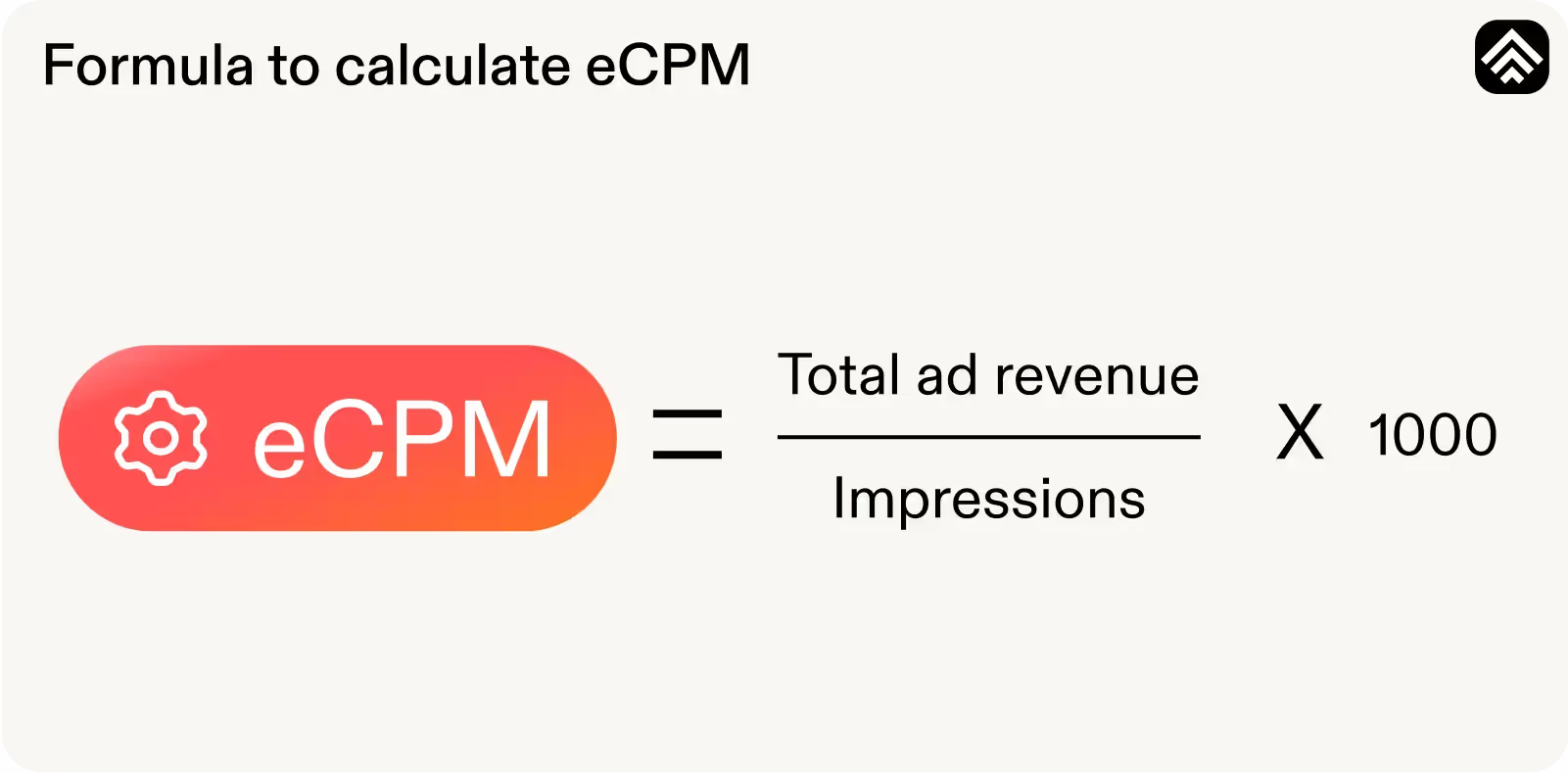eCPM Calculator: Calculate Effective CPM in 3 Steps
Effective cost per mille (eCPM) is a publisher-side metric that measures the revenue earned for every 1,000 ad impressions.
Effective cost per mille (eCPM) is a publisher-side metric that measures the revenue earned for every 1,000 ad impressions. The Publift eCPM calculator is a free online tool that helps publishers estimate their potential earnings from online advertising.
What Is Effective Cost Per Mille (eCPM)?
eCPM measures the revenue generated for every 1,000 ad impressions displayed. It differs from CPM in that where CPM measures the cost an advertiser incurs for every 1,000 impressions, eCPM measures the revenue a publisher generates for the same number of impressions.
Publishers use eCPM as a means of enhancing ad placements, keeping an eye on ad monetization performance, and gauging the overall effectiveness of their ad monetization efforts.
It needs to be noted that eCPM only measures impressions, and not the number of times an ad was clicked. This latter metric is called click-through rate or CTR. A conversion happens once the user has transitioned down the funnel of impressions and clicks. The eCPM is thus, only the first point in this conversion funnel, and should be used in conjunction with other metrics to fully evaluate the success of an advertising campaign.
Effective Cost Per Mille (eCPM) Formula
The formula for eCPM is as follows:
eCPM = (Total Ad Revenue / Total Impressions) x 1000
For example, let's say a publisher earned $500 from an ad campaign that received 100,000 impressions. To calculate the eCPM, we would use the following formula:
eCPM = ($500 / 100,000) x 1000
eCPM = $5
Therefore, the eCPM for this ad campaign is $5 per 1,000 impressions. This means that the advertiser earned an average of $5 for every 1,000 times the ad was displayed.

How to Calculate eCPM Using the eCPM Calculator?
To calculate eCPM using an eCPM calculator, follow these steps:
- Determine the total revenue earned: This includes all the revenue earned from ads, including impressions, clicks, and any other actions.
- Calculate the total number of impressions: This is the total number of times your ads were displayed on the website or app.
- Input the revenue and impression data into the eCPM calculator: The eCPM calculator will automatically calculate your eCPM based on the information you provide.
- Review the calculated eCPM: The eCPM calculator will provide you with a value representing the average amount of revenue generated per 1,000 impressions.
What Is Considered a Good eCPM?
What is considered a "good" eCPM can vary depending on multiple factors such as the type of ad, the platform being used, and the industry in which the publisher operates.
A publisher in the technology or finance niche may expect to see higher eCPMs compared to a publisher in the entertainment or lifestyle niche. Additionally, if a publisher receives traffic from Tier-1 countries such as the US and UK, advertisers are likely to pay more for that traffic.
That said, the average eCPM for most niches falls somewhere between $4-10. Anything within this range would be considered a good eCPM.
To increase their eCPM, publishers should look to increase monthly traffic, partner with multiple ad networks, work on their viewability score, A/B test different ad units, and experiment with different ad formats.
Frequently Asked Questions
Why Is eCPM Important?

eCPM is an important metric for publishers as it provides insight into the revenue generated by their ad inventory. This information helps them optimize their ad placements and pricing strategies to maximise their revenue.
What Is an Average eCPM?

The average eCPM varies depending on the industry, ad type, ad placement, and target audience. However, for most industries, $4-10 can be considered an average eCPM.
What Factors Affect Your eCPM?

Several factors influence eCPM, including:
- Ad Format
Different ad formats have varying eCPMs. For example, video ads tend to have higher eCPMs than display ads and native ads typically have higher eCPMs than banner ads. - Audience Demographics
The demographic characteristics of your audience will affect eCPM rates. Advertisers may be willing to pay more for ad impressions if they are targeting a specific demographic that is more likely to convert. - Geolocation
The geographic location of your audience can also impact eCPM rates. Advertisers may be willing to pay more for impressions in regions where their products or services are more popular or where there is higher purchasing power. - Ad Placement
The position of ads on a webpage has an impact on the eCPM rates, with ads placed in prime locations like above the fold or in the sidebar generally resulting in higher eCPMs compared to those situated lower on the page. - Ad Quality
The quality of the ads being displayed can impact eCPM rates. Ads that are more visually appealing or have more engaging content may receive higher bids from advertisers.
Deep Dive into Programmatic Advertising

In this week's episode, we're taking a look at cars.com, one of the biggest auto marketplaces in the US. Ben and Brock speak about the detailed insights and suggestions for optimizing cars.com’s ad revenue.

We're delving deep into the world of AdSense arbitrage—a game-changing strategy where publishers invest in ads to drive traffic.
Ready to boost your ad revenue?
AdSense is a great starting point, but it’s just one demand partner. Find out how you can get more revenue from your site without impacting users with Publift’s programmatic advertising platform Fuse.
Fuse is also built for Independent Publishers looking to access more premium demand partners. Get even more competition for your ad inventory with access to over 25 premium demand partners. We’ll set you up with the best partners for your individual site, with personalised ad optimisations unique to your users and business model. Get access to all of your reporting in one place with our Fuse all-in-one automated reporting dashboard.
Boost your in-app ad revenue and grow your business with Fuse Apps by Publift. We’ll give you access to over 10 app advertising demand partners, and make sure you have the right ad formats to maximise your revenue without impacting user experience.






